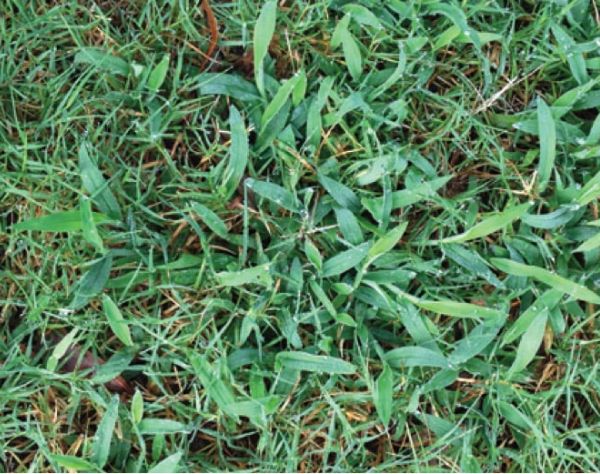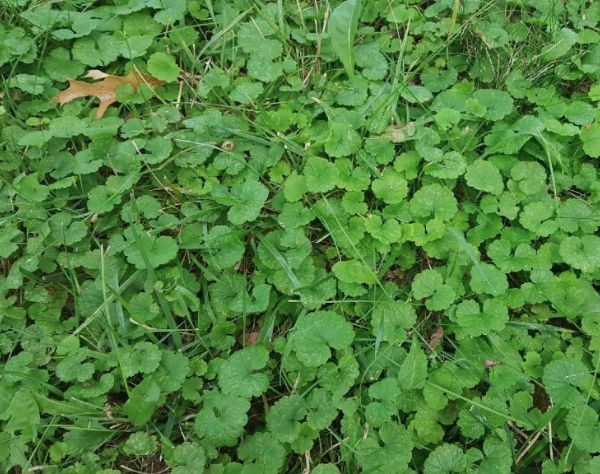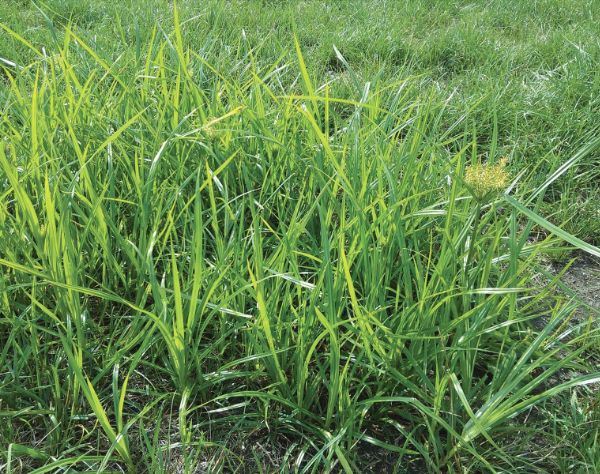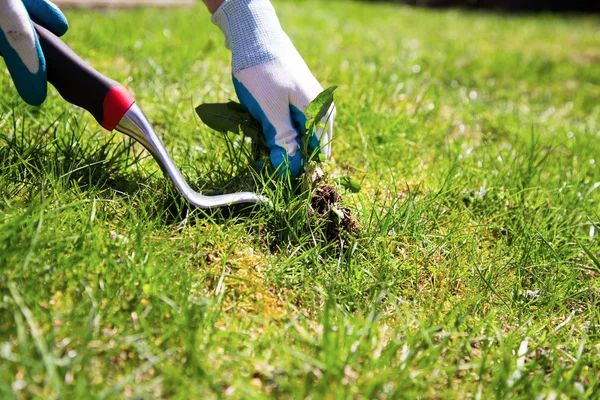What’s the one thing you fall behind on most in the yard or garden? If your answer is weeding, then you’re not alone! It’s the most time-consuming and effortful work there is when it comes to your beautiful lawn. Weeds are competitive and can establish by reseeding or spreading roots and stems more aggressively than other plants. Additionally, seeds are most adaptable to poor soil, which is why they are common in ditches and construction sites. So, how do you get ahead of a weed problem? Let’s look at some methods to eradicate these pesky plants.
Prevention
Easier said than done, prevention is the best way to control weeds. These methods keep seeds from germinating and suppress unwanted plants that reproduce by roots or stems.
Mulch is one of the easiest preventions for gardens. It shades the soil, so seeds don’t germinate, causing a sprouted plant to use up its energy reserves trying to reach light at the surface, which prevents seed that drops or blows in from contacting the moist soil, and smothering small weeds.
Landscape fabric used as a weed barrier with a layer of mulch on top can also keep sprouting weeds from reaching the surface. Biodegradable materials like newspaper or cardboard allow water to low through and break down into the soil.
Common mulches are shredded bark, straw, grass clippings and compost. For the best weed control, apply a 2-3 inch layer of mulch in spring when perennials are just emerging and before annual weeds germinate. Top off with a light layer every year to freshen it up and replace material that has broken down. An additional benefit of using mulch is that it conserves moisture in the soil beneath, meaning you don’t have to water as often!
Pre-emergent herbicides, such as Preen, are applied in early spring and act like a barrier, as the chemical covers the soil and any seedlings that come in contact upon germination are killed as long as the barrier isn’t broken.
Manual Control
So, what if prevention is too late and these unwanted weeds are alive and well? There’s multiple options to control. Firstly, pull by hand or dig weeds to get rid of unwanted plants. However, weeds that are spread by stolons or rhizomes can spread even more rapidly if roots break off in the ground when pulled or are chopped up when tilled, because each little piece will root again. So when you remove weeds, make sure to get all the roots. Do it when the soil is moist, such as after a soaking rain, so the weeds will be easier to pull and you’ll be more likely to get the whole plant. Lay them out to dry on top of the ground and you can incorporate them into the soil after they’ve deteriorated or throw them on a compost pile. Toss weeds with seeds in the trash so they don’t escape into the garden again.
What if your weeds got too big to pull? Mow frequently to weaken perennial plants with a taproot or bulb or repeatedly cut large weeds off at the ground with shears or pruners before they can seed. You may still have the original plant, but in time, if you keep doing this, the roots won’t have enough energy to keep growing. Annual weeds that sprout, bloom, and produce seeds in just one season can be cut off at the ground or deadheaded to prevent them from setting seed. Or at least remove seedheads or pods before the seeds are dispersed
Chemical Controls
Used correctly, herbicides are very effective for weed control. However, you should always be cautious and read the labels thoroughly before applying them, and wear protective clothing. The label will tell you whether the product is pre-emergent (prevents germination or kills just as seedling emerges), broad-spectrum (kills any plant, even those you want if you’re not careful), or selective (kills only certain kinds of plants, such as grasses).
Herbicides can be organic, such as corn gluten, or synthetic, like glyphosate, and come in different forms. You may need to spray liquid herbicide when foliage is dry and no rain is expected or the chemical will be diluted and not do its job correctly. Liquid weed killers come in ready-to-use sprayers for spot spraying or concentrated forms that need mixing. You may need to spread granular herbicide on wet foliage so the product will stick to the weed to be effective, or it may need rain to wash the herbicide into the soil. Granular forms are easy to use with a drop spreader or hand-held whirler.
However, weeds are adaptable, and some can become resistant to herbicides over time. Avoid using the same product over and over, and only use chemicals after you’ve tried everything else.
A good lawn has lots of grass plants all grown tightly together, intermeshing their roots and foliage. When a weed interjects itself into the lawn, it can be hard to get rid of because it gets tangled up with the grass. That’s where good cultural controls come in handy: A lush, thick lawn will prevent weeds from gaining a foothold, so water and fertilize your grass to keep it healthy. Allowing grass clippings to remain on the lawn and filter down to the base of the leaf lades creates a thatch layer that helps to deter weeds, like a mulch. Killing weeds manually is a little trickier because you can’t cultivate or hoe. However, you can use a narrow weeder to slip into the soil and pop weeds out root and all, or cut them back to the ground to prevent reseeding. If you plan to treat your entire lawn, be sure to choose a selective broadleaf herbicide.
Now that you know ways to control unwanted plants, we’ll show you common weeds you might see in lawns and how to deal with them
Crabgrass – Digitaria sanguinalis

This annual grass grows from a low-growing clump that can root at the nodes. The stems are hairy and the leaf lades wide. Seed is formed from flower spikes with two to nine fingerlike structures throughout the growing season. Crabgrass favors dry, poor-soil areas, such as thin spots of lawn next to driveways, foundations, or sidewalks. So, how do you get rid of them? Pulling is easily done with single plants. A lush-well watered lawn will discourage crabgrass. Prevent germination in early spring before soil temperatures are higher than 50 degrees F by applying corn gluten, a pre-emergent herbicide.
Creeping Charlie – Glechoma hederacea

Round leaves with scalloped edges grow in pairs on square, aboveground stems, called “stolons” that grow horizontally and root at the nodes. Purple spring flowers produce seeds but perennial creeping Charlie is best known for aggressively spreading by its stolons. Pull up a plant and you might be surprised by how far-reaching these stems are! Creeping Charlie prefers shade and moist soil and can be found in thin lawns and perennial beds. Small patches can be pulled, but be sure to get all the roots and dispose of them in the trash so they can’t root elsewhere in the lawn or garden. A cool-weather lover, creeping Charlie is most effectively controlled with a selective broadleaf herbicide containing triclopyr when it’s actively growing in the fall just after a frost or in spring when it’s in bloom.
Yellow Nutsedge – Cyperus esculentus

Yellow nutsedge has triangular-shaped stem bases and stiff leaf blades. It can grow up to 3 t. Tall, with umbrella-shaped yellow flowers. Though it can spread by seed, this perennial reproduces faster by tubes, or nutlets, that grow along rhizomes, or horizontal underground stems. Yellow nutsedge is especially happy in moist or poorly drained areas with thin turf. Digging the whole plant can be effective for small stands. In a lawn, thick grass will suppress its growth, and not overwatering is helpful. Since it is a sedge, herbicides should be selective for sedges and contain halosulfuron or sulfentrazone, applied in late spring to early summer before the plant has started producing tubers.
